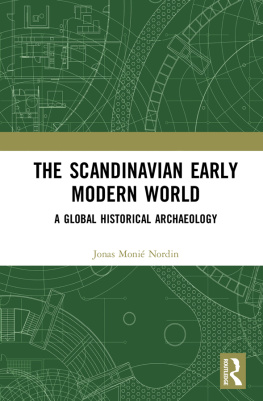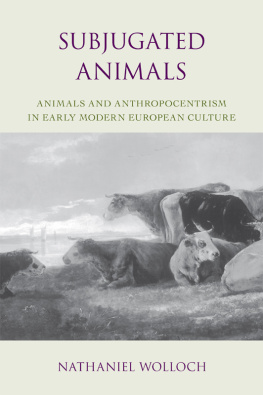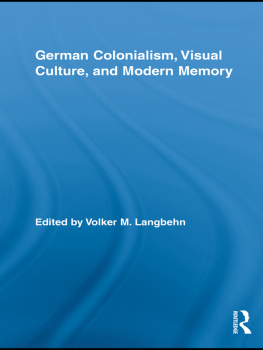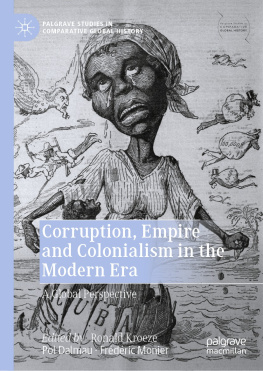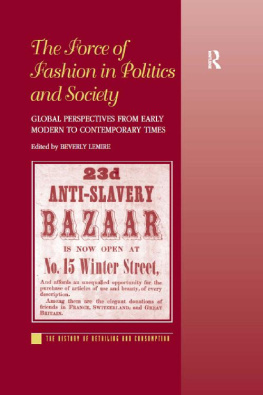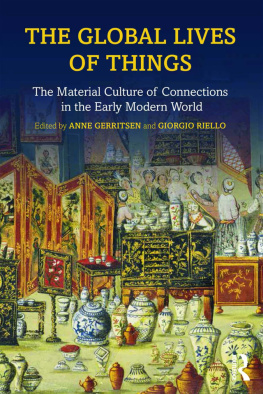The Scandinavian Early Modern World
The Scandinavian Early Modern World explores the early modern colonialism, globalization, and modernity in Scandinavia, along with its colonies, and its role in the shaping of the modern world.
Scandinavians played an active role in early modern globalization and were present as traders, as colonialists, and as consumers in competition and collaboration with indigenous agents and other colonial actors in America, Africa, and India. This story is rarely told. The joint study of history, historical landscape, and material culture, from a Scandinavian vantage point, provides for a comprehensive and original interpretation of the birth of globalization and modernity. New perspectives and data are presented, deepening and challenging our knowledge of the long seventeenth century. In-depth analysis of case studies, encompassing four continents and their material entanglement, makes this book a unique contribution to historical archaeology.
The Scandinavian Early Modern World aims at students and scholars of anthropology, archaeology, and history, alike, taking interest in the global connections of the long seventeenth century and the role of Scandinavia in that process.
Jonas Moni Nordin is an associate professor in historical archaeology at the University of Lund and a researcher at Stockholm University, Sweden. He has published widely in the field of early modern colonialism, globalization, and Scandinavian early modern archaeology.
First published 2020
by Routledge
2 Park Square, Milton Park, Abingdon, Oxon OX14 4RN
and by Routledge
52 Vanderbilt Avenue, New York, NY 10017
Routledge is an imprint of the Taylor & Francis Group, an informa business
2020 Jonas Moni Nordin
The right of Jonas Moni Nordin to be identified as author of this work has been asserted by her in accordance with sections 77 and 78 of the Copyright, Designs and Patents Act 1988.
All rights reserved. No part of this book may be reprinted or reproduced or utilised in any form or by any electronic, mechanical, or other means, now known or hereafter invented, including photocopying and recording, or in any information storage or retrieval system, without permission in writing from the publishers.
Trademark notice: Product or corporate names may be trademarks or registered trademarks, and are used only for identification and explanation without intent to infringe.
British Library Cataloguing-in-Publication Data
A catalogue record for this book is available from the British Library
Library of Congress Cataloging-in-Publication Data
A catalog record for this book has been requested
ISBN: 978-0-367-34807-6 (hbk)
ISBN: 978-0-429-32817-6 (ebk)
Typeset in Times New Roman
by Apex Covantage, LLC
Writing a book is never a solitary undertaking. Encounters with people of the past, present, and future in the process of tying studies and analyses of the past together with the quest of identifying future readers makes writing a social activity. This writing process has been social in even more ways than that, through the sites and countries visited: Canada, Denmark, England, Finland, Ghana, The Netherlands, Norway, Sweden, and the United States.
This book has sprung from my post-doc position, funded by the Swedish Royal Academy of Antiquities and Letters, and Riksbankens jubileumsfond, which both also supported the finalizing of this book. A generous grant from Konung Gustaf VI Adolfs fond fr svensk kultur, helped finishing this book. As a senior researcher I have been able to include results of my later research projects, A Colonial Arena and Collecting Spmi, funded by the Swedish board of Science. Likewise, through collaborating with other colleagues and friends, I have been able to include results from various fieldworks in Scandinavia, America, and Africa. I wish to express my gratitude for the generous help with illustrations from museums, friends, and colleagues worldwide.
The people I have met in West Africa, North America, The Caribbean, and the Nordic countries, from the shores of the Arctic Ocean to Zealand, have helped me in more ways than I can give credit for here. At an early stage Mark Leone encouraged me to pursue the path of global historical archaeology. His showing me of Annapolis and the Chesapeake opened the world to me. Discussions with Audrey Horning in Amsterdam, Boston, Williamsburg, and Istanbul kept the world open. Lu Ann De Cunzo, Vesa-Pekka Herva, Eva Svensson, James Symonds, and Barbara Voss have all shared data, supported and encouraged me through the writing process.
I wish to thank Georg Haggrn and Mathias Bck for our fruitful and joyful collaboration in the The Iron and the Thirty Years War project (funded by the Swedish Iron Masters Association). Parts of the results are included in this book. The results of the fieldworks sprung from the A Colonial Arena project (funded by the Swedish Board of Science) and the surveys conducted by myself, Carl-Gsta Ojala, and sa Lindgren are included here, and I wish to thank C-G and sa for lovely weeks in Jukkasjrvi and Svappavaara.
Anders Andrn has read and commented on an early draft of this book, for which I am grateful. Anders has also been an unfailing supporter of the widening of historical archaeology in Sweden. Steve Mrozowski has supported my ideas of synthesizing Scandinavian Historical Archaeology and tie it to the greater world, and I am deeply grateful for having had Steve as reviewer of the complete manuscript. I also wish to express my gratitude to Nina Colwill for her struggle in shaping the Swenglish manuscript into an English book.
My deep gratitude goes to Gran Rydn, who not only read and commented on an early draft of this book, but whom I also shared wonderful archaeological moments with; strolling through the ruins of the Napoleonic forts on Hassel Island, St. Thomas, United States Virgin Islands, slag heaps in Rros, Norway, rain cold roast ovens at Staberg, Falun, in Sweden. Gran showed me how perfectly one can blend the interest of history in the past landscape with discussions on winter sports, such as bandy and alpine skiing, with bird watching, listening to Paul Wellers music, and enjoying a good ale.
Most of all this book is a Stanford product. I could not have written this without the kind support of my very good friend Krish Seetah, and Stanford University. A visiting research fellowship at Stanford Humanities Centre in October 2013 gave me the possibility to start. A yearlong stay, 20162017, as visiting scholar at the Stanford Archaeology Centre, gave me time to write. Access to the amazing Green library collection made ambitions to write a global historical archaeology realistic.
Lastly my gratitude goes to the late Paul Williams of the Temptations for providing continuity in a rapidly changing world.
I wish to dedicate this book to my lovely wife, Adrienne Srbom, and my wonderful daughters Klara and Sigrid. Thank you for your enthusiastic company to the dungeons of Cape Coast Castle, the not always sunny California, the North American Eastern Seaboard, the mountains of northern Spmi, and the ruins of deserted seventeenth-century industries found along the rivers.

